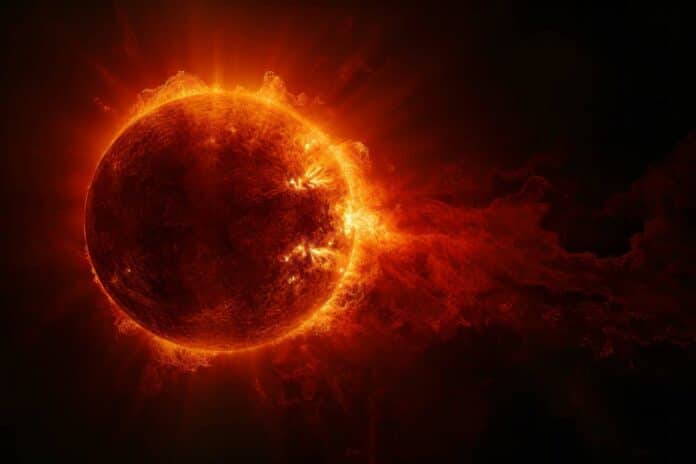Sun constantly produces solar flares, which have a significant impact on Earth. Even after being so powerful, they are insignificant compared to the thousands of “superflares” produced by stars 100–10,000 times brighter than those on the Sun.
Scientists believe the physics behind solar and super flares is similar, involving a sudden release of magnetic energy. While super-flaring stars have stronger magnetic fields leading to brighter flares, some exhibit an unusual pattern—first, a brief, intense brightness increase, followed by a longer but less intense flare. A team led by researchers from the University of Hawaiʻi Institute for Astronomy, including Postdoctoral Researcher Kai Yang and Associate Professor Xudong Sun, developed a model to explain this unique behavior.
University of Hawaiʻi Institute for Astronomy Postdoctoral Researcher Kai Yang said, “By applying what we’ve learned about the Sun to other, cooler stars, we could identify the physics driving these flares, even though we could never see them directly. The changing brightness of these stars over time helped us see’ these flares that are far too small to observe directly.”
Previously, it was believed that the visible light in star flares originated solely from the lower layers of a star’s atmosphere. Energized particles resulting from magnetic reconnection would fall from the hot, thin corona and heat these lower layers.
Recent research suggested that emission from coronal loops—hot plasma trapped by a star’s magnetic field—might also be observable in super-flaring stars—however, the density in these loops needed to be exceptionally high. Unfortunately, astronomers lacked a method to test this hypothesis because these loops couldn’t be observed on stars other than our Sun.
Other astronomers, utilizing data from the Kepler and TESS telescopes, identified stars displaying an unusual light pattern resembling a celestial “peak-bump,” characterized by a sudden increase in brightness. This light curve corresponds to a solar phenomenon observed on the Sun, known as solar late-phase flares.
Scientists wondered if the same process- energized, large stellar loops- could generate similar late-phase brightness enhancements in visible light.
Yang utilized fluid simulations commonly employed for modeling solar flare loops to address this question. He adjusted the loop length and magnetic energy, discovering that a substantial input of flare energy led to the injection of significant mass into the loops. This, in turn, resulted in dense, bright, visible-light emission, aligning with predictions.
The findings indicated that the observed “bump” in flaring light occurs when the hot gas cools down at the loop’s highest point. Due to gravity, this cooled material descends, creating what is known as “coronal rain,” a phenomenon frequently observed on the Sun. This model confirmation gives the research team confidence in its realism.
Journal Reference:
- Kai E. Yang, Xudong Sun, Graham S. Kerr, and Hugh Hudson. A Possible Mechanism for the “Late Phase” in Stellar White-light Flares. The Astrophysical Journal. DOI 10.3847/1538-4357/ad077d
